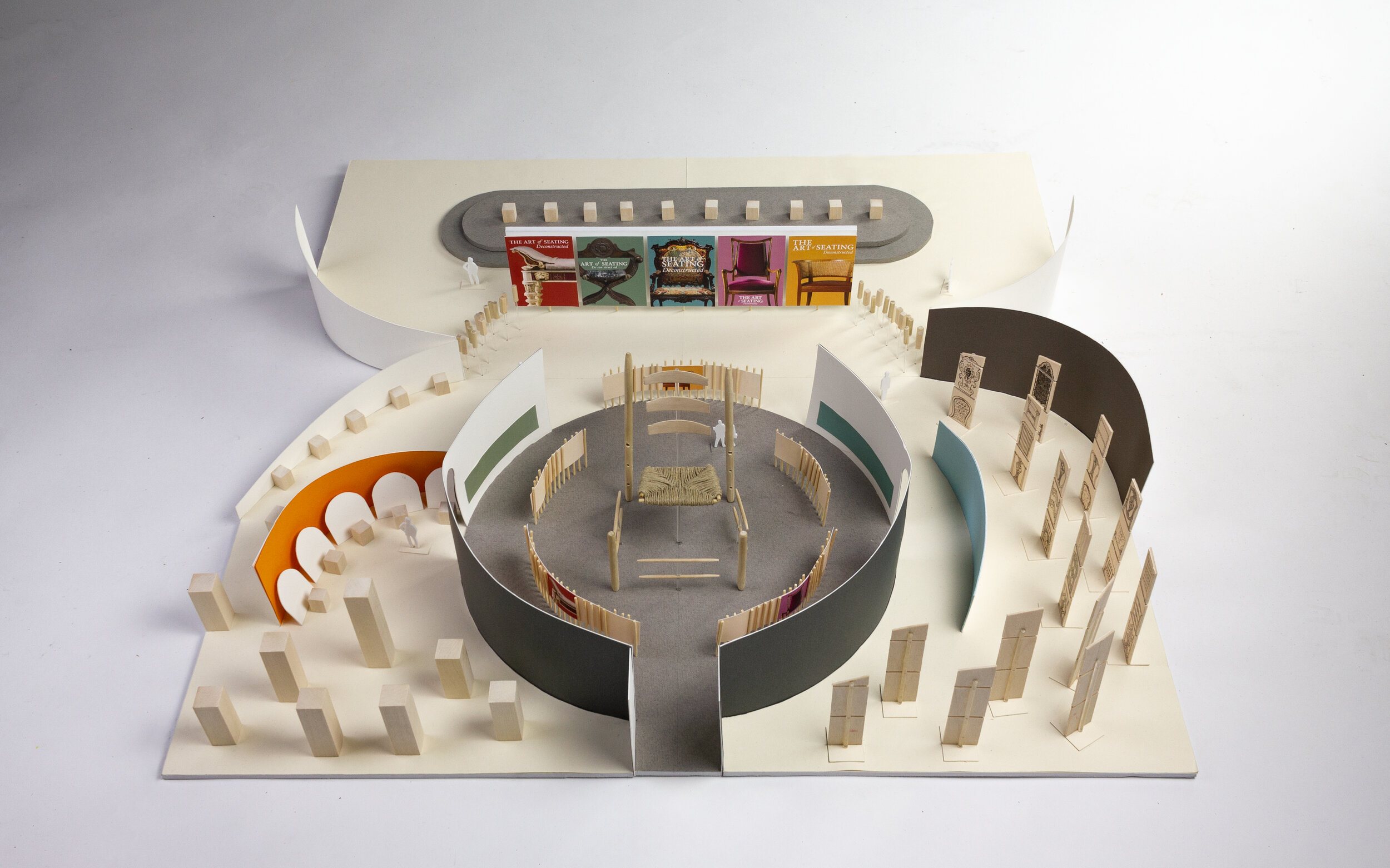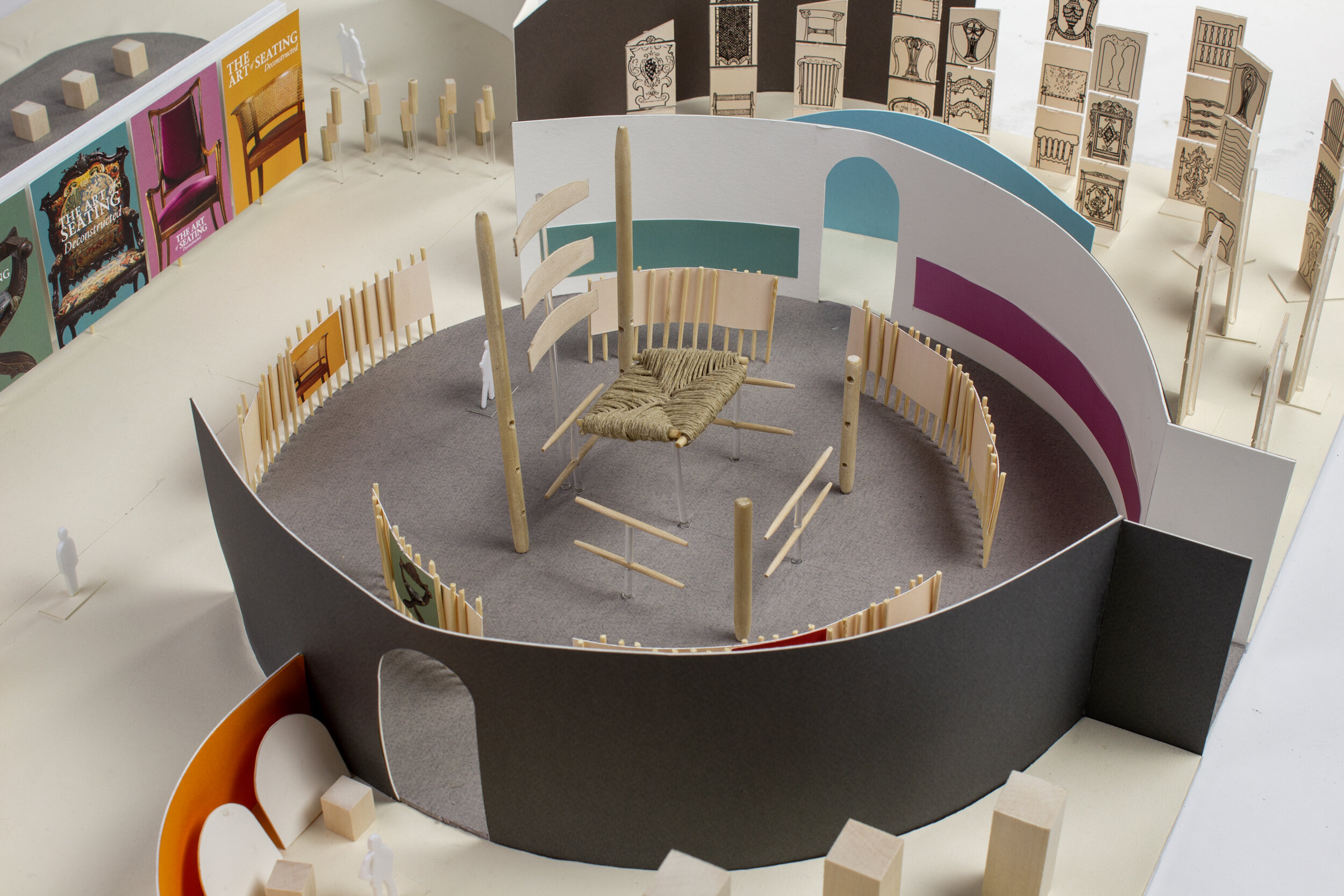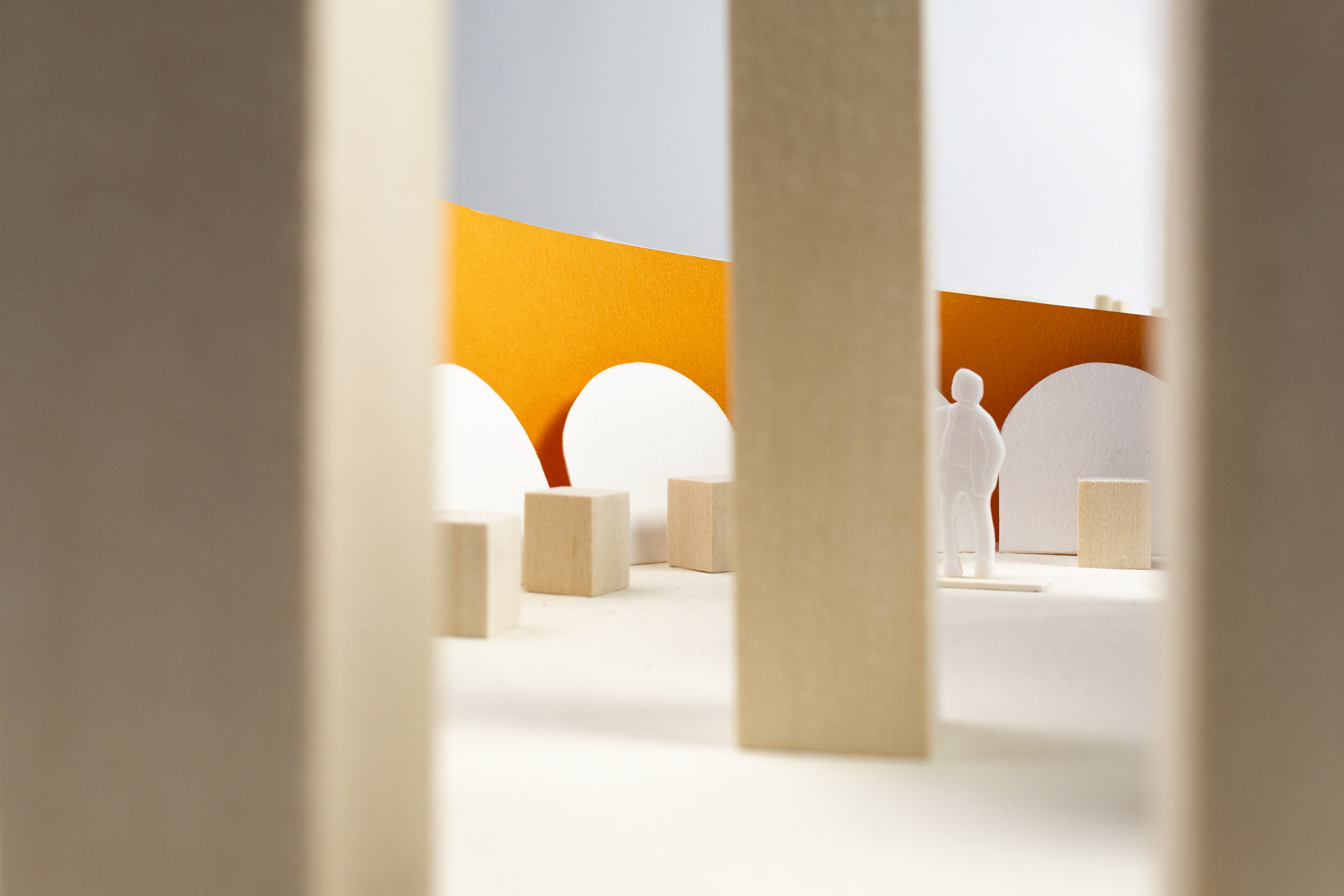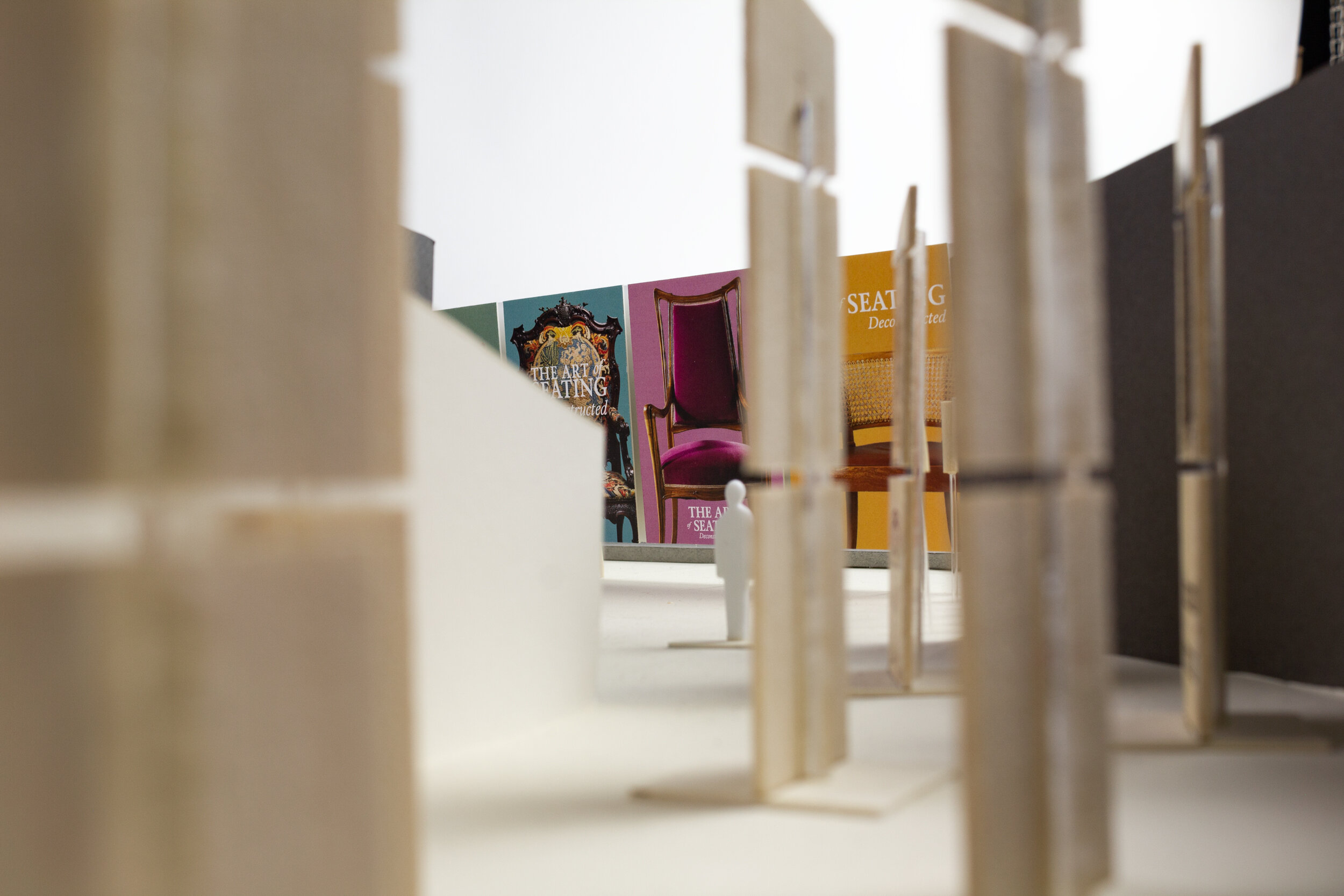Antiquity
Medieval
Baroque/Rococo
1800’s
Modern
The Art of Seating: Deconstructed
A proposal for an exhibition which presents the wooden chair as a collection of parts, the Art of Seating: Deconstructed educates viewers on the history of the most beloved piece of furniture. From Antiquity to the early 20th century, the exhibition displays examples from the 5,200-year history of seating. Hidden in plain sight, the chair is often seen as a whole rather than an assembly of pieces. This exhibition demonstrates to visitors what makes a chair, a chair — its origins, its parts, and its construction. The examples showcased are evidence of the chair’s significance as a status symbol, in addition to being icons of style and culture.
“‘A chair is the first thing you need when you don’t really need anything,’ observed [design critic Ralph] Caplan, ‘and is therefore a peculiarly compelling symbol of civilization.’ The way we choose to sit, and what we choose to sit on, says a lot about us: our values, our tastes, the things we hold dear.”
Now I Sit Me Down: From Klismos to Plastic Chair: A Natural History
Wooden blocks are used in this presentation concept (above) to stand-in for details throughout the exhibition space. Abstracted elements keep focus on the overall design rather than representing specific pieces. Additionally, this provides the ability to tailor the collection to suit different regions, countries, or cities.
Visitors entering the exhibition space are immediately met with a larger-than-life exploded view of a Shaker chair. The inner ring identifies various parts, describing their role and importance within the structure. A historical timeline surrounds this area, providing information on the role of chairs throughout various eras: Antiquity, Medieval, Baroque/Rococo, the 1800’s, and the early 20th century.
Viewers can learn more about seat bottoms in a room to the left of the historical timeline. Columns of seats allow guests to view this familiar component in a new manner.
To the right are walls of chair backs from throughout time. Here people may compare the various forms used in different eras; rigid boards, soft upholstery, ladder backs, etc.
Visitors then pass through a suspended chair leg curtain to enter the final section, full of reproduction seating from all eras. The curtain acts as a gateway between the education and application of knowledge. At this point, the viewer should be able to identify and appreciate the various components of a chair. Allowing visitors to sit on and handle the furniture provides a tactile, personal connection already associated with this common household object.
“Every chair represents a struggle to resolve the conflict between gravity and the human anatomy, sitting up is always a challenge.”
Witold Rybczynski













